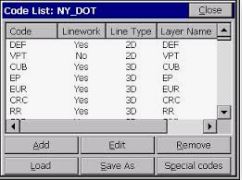Warranty Claims Knowledge - June 2022


In the early 1990’s my mother, Dorothy was hired at KeyPrestige, Inc (KPI) to work in the Coding Department. After the mailroom opened the envelopes containing NARDA warranty claim forms sent to us by thousands of service companies, Dorothy would get the white copy of the NARDA and manually apply various codes specific to each manufacturer. She would read the customer complaint and apply a four-digit Complaint Code. Then she would refer to the Service Performed Description and apply a four-digit Repair Code. This coding practice was necessary prior to entry of the warranty claim information into a computer system for processing.
With the introduction of electronic claims filing in 1993, much of the claims coding responsibility switched from Dorothy to each of the manufacturers’ authorized servicers. Today Dorothy is 95 and living in Laguna Niguel spending her days puzzling and the application of the necessary warranty claim codes are often overlooked by servicers during the claims process. What happens? Simple answer. NO payment!
Warranty claim coding involves assigning codes to the diagnosis and repairs of appliance products that will be reimbursed under the manufacturers’ warranty provisions. For most manufacturers, this includes some variation of the following:
• A code to identify the customer’s concern
• A labor operation to describe the repair
• A fault code to describe what failed or why
• Specific codes may be used to determine warranty labor reimbursement
Types and Names of Codes
There is much more to the process than just translating the work performed into a series of codes and into a language that the manufacturer’s computer can understand. So, what makes this job difficult? It can be rather confusing. For example, do you use a Complaint Code, Fault Code, Repair Code, Resolution Code, Job Code, Call Code, Failure Code, F-Ident or Defect Code? There can be many names for the code(s) you need to apply to your warranty claims to get paid.

Nearly thirty years ago there was a standard code list introduced by the North American Retail Dealers Association (NARDA) and the Electronic Industry Association (EIA) including Defect Codes such as CUST, DEAD, INOP, APPR and Repair codes such as PTME, PTEL, SOLD, IADJ, EADJ. Some of these are still used by certain manufacturers today for warranty claims. However, some manufacturers have either changed the name of the code field or added new codes.
Here are just a few of many examples:
GE Rather than use the standard codes GE decided to use the code field to determine the labor amount. They have two codes MA00 pays standard labor rate and SS00 pays the sealed system labor rate.
AIG AIG uses numeric codes to determine if the repair was done as on-site repair or stock repair. On-site repair code is 8001
Asurion Changed the names of the code from Defect Code to Failure Code and Repair Code to Resolution Code.
Bosch For this family of brands you will need to have four codes per warranty claim. Failure Code, Repair/Job Code, MFG F-Ident, Call Code
If your Business Management Software does not allow you to enter one or more of these required codes, you will need to log into the manufacturers’ warranty claims portal of choice and enter the codes for all incomplete claims.
In summary, coding warranty claims is an exacting and frustrating task. It takes the right mindset to do it right and consistent. Learning the manufacturers’ codes and claims system is just a matter of education and some practice. Given the choice, a well-suited neophyte is better off than a sloppy person with experience.
REMEMBER codes are mandatory. You will not get your claim processed and paid without them.
Interested in learning more?
Give us a call at 877-311-6602 , Ext. 8000 or visit our website JustPressOne.com

